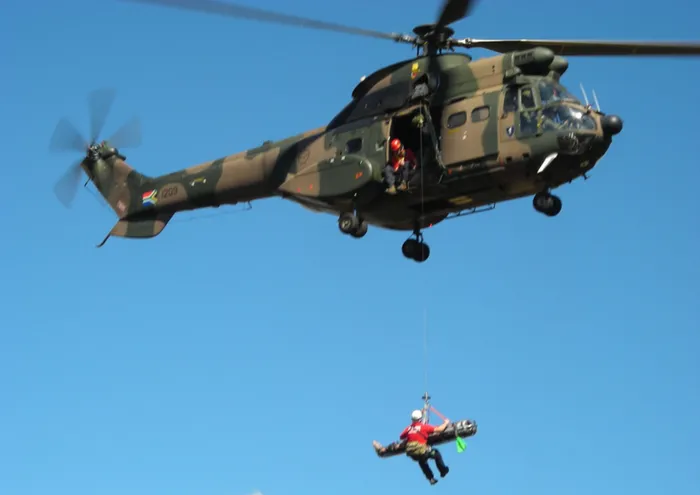'Technical challenges' hampered air forces' response to deadly E Cape floods

DA MP Patrick Atkinson said it took a full week after the onset of the devastating floods in the Eastern Cape for the SAAF to deploy a single Oryx helicopter to assist with flood relief efforts.
Image: MSCA Search and Rescue/ FILE
‘TECHNICAL challenges’ were responsible for the delayed deployment of the South African Air Force (SAAF) to assist during the devastating floods which claimed the lives of more than 100 people in the Eastern Cape last month, says Defence Minister Angie Motshekga.
“The challenges were technical. However, they were corrected, hence we managed to send assistance in the form of an Oryx.
“Upon receiving the second request for assistance on 16 June 2025, one Oryx helicopter capability became available and was tasked to deploy on 17 June 2025,” Motshekga said in her response.
She made the comments when responding to parliamentary questions from the EFF and the DA amid the continued underfunding of the SAAF.
DA MP Patrick Atkinson said it took a full week after the onset of the devastating floods in the Eastern Cape for the SAAF to deploy a single Oryx helicopter to assist with flood relief efforts.
EFF MP Carl Niehaus noted with concern that the SAAF was not deployed during the critical early stages of the floods in Mthatha and other parts of the Eastern Cape, and that the response was limited to one helicopter two weeks later.
Niehaus and Atkinson asked for the reasons and an explanation for the SAAF’s failure to respond in a timely and adequate manner when over 100 people had died and hundreds were displaced.
Niehaus also pressed the minister on whether the late response by the SAAF was due to the failure to maintain the Oryx fleet by state-owned enterprises Denel Aeronautics.
Motshekga said state-owned enterprises' arms manufacturer Denel only played a very minor part in the lack of Oryx helicopters.
“They are unable to continue with servicing and repairs due to a lack of funding for spares and the long lead time (up to two years) that it takes the original equipment manufacturers (Airbus and Safran) to deliver ordered spares,” she said.
She was asked about measures that have been implemented to ensure the readiness of the SAAF for future disasters.
In her response, Motshekga also said there were no spares of major components, and the SAAF experiences a very long lead time when ordering spares from the original equipment manufacturers.
“Currently, there are no measures in place as the SAAF continues to be underfunded, and the flow of spares from overseas original equipment manufacturers remains extremely low.”
Motshekga would not be drawn into commenting on the number of qualified flight engineers and how that compared to serviceable helicopters and trained pilots, as well as urgent steps taken to address the shortage of flight engineers.
“The detailed impact on national security can only be discussed in an appropriate closed setting,” she said.
Cape Times
Related Topics: